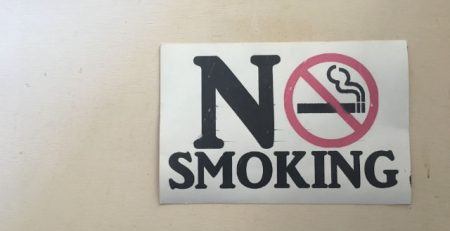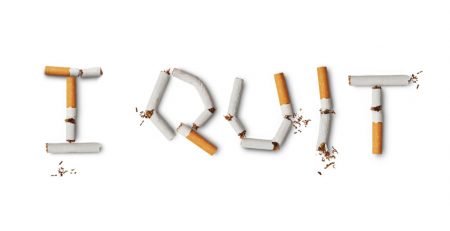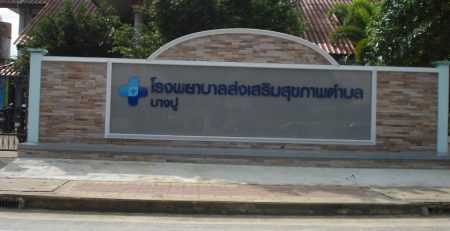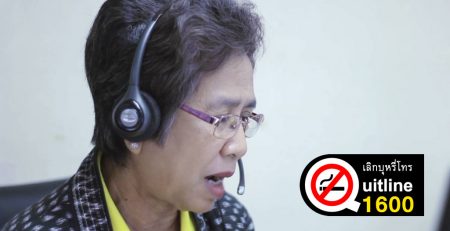Ubonrat Hospital
Ubonrat Hospital, Khonkaen Province Ubonrat Hospital has clearly announced its policies of decreasing, giving up smoking in the hospital due to concerns for public health through the view, “Healthy through healthful conditions”. The work of the hospital was driven in 2 ways as below:
Posting non – smoking signs
Making public relations via media, asking male hospital staff to provide non – smoking information to smokers beginning
a hospital stay and expanding activities to communities via various mechanisms of village headmen who act as focal points in expanding ideas and driving non – smoking campaigns.
Ubonrat Hospital, Khonkaen Province
Ubonrat Hospital, KhonkaenProvince: “Driving non – smoking in communities” Telling the Story
Ubonrat Hospital has worked on public health through community development to help people to decrease and give up smoking. Ubonrat Hospital has announced its Non – smoking hospital policy since 2007. People visiting the hospital receive information on non – smoking and they are stimulated and advised to quit (long term) smoking. All these activities are informally performed by volunteer hospital staff who are willing to drive non – smoking activities in the hospital.
Concept
Ubonrat Hospital’s mechanism for driving non – smoking activities is performed via village headmen who act as focal points in expanding ideas and driving the proactive work performance aiming to encourage health promotion to rural communities.
Activity Characteristics in 2 parts:
- Collaborating with community leaders (village headmen) to survey communities’ opinions for quitting smoking.
- Advice to quit smoking driven by village headmen who have opportunities to create innovative working methods through their own skills. Monthly meetings are held to discuss conclusions about non – smoking performance and exchange work experience among village headmen.
What happened?
- Collaboration with all departments in the hospital such as: (1) the Dental department has purposed a dental technique to monitor the success of quitting smoking by using a chemical dye of teeth for those smokers participating in smoking cessation, and (2) asking male hospital staff to provide non – smoking information to smokers
- Post non – smoking signs and make public relations via media, and invite smokers in villages (nominated by village doctors) to be volunteers to take care of patients, such as helping patients with chronic diseases caused by smoking to quit smoking, provide advice for taking medicine, and encourage exercise for those patients. Those activities will give volunteers pride and finally stimulate them to quit smoking.
Which parts have been changed?
Policy
- The hospital has announced the policy of being a 100% Smoke – free hospital which is acknowledged by all departments in the hospital.
- Set as one requirement of salary rise that there is no salary rise to those staff who smoke
- Arrange the hospital environment to be Smoke – free as required by law
- Have Smoke – free hospital signs in hospital areas, make public relations and collaborate with neighboring communities to promote Smoke – free hospital compliance
- Encourage hospital staff to quit smoking
Find staff in the hospital who smoke and help them to quit smoking, do not accept smokers to be hospital staff, develop a service system in order to provide knowledge and encourage smokers to quit smoking, work on the development of 5A programs in all departments, department leaders in the hospital collaborate for quit smoking, having a team to monitor quitting smoking. The cessation clinic was established on 5 October 2007 with activities to provide advice, boost will power of smokers to quit smoking, let smokers know about the stages of quitting smoking, and how to deal with smoking feelings. Ubonrat Hospital extended opportunities for quit smoking in the community, while the community set up an agricultural meeting.
Lessons learnt to expand Smoke – free hospital to all areas of Amphur Ubonrat, the most important being:
The working operation should give priority to basic relationships in the community, create friendly relationships and understanding among individual and in the community.
Lessons learnt so other people can apply them to future work.
- Several factors influence the quit smoking decision such as persuasion, stimulation via smokers’ family, and providing opportunities to people to participate in Smoke – free activities which let them consider and try quitting smoking.
- Set a calendar for the non – smoking campaign so smokers can easily participate in the non – smoking campaign
- Set a system to support quitting smoking, monitor results of quitting smoking in reality, provide knowledge as a background to support quitting smoking and be ready to deal with the feelings of smokers and the community about smoking.
- Set a system to boost will power for quitting that can be accessed easily by those smokers who participate in the smoking cessation program.
- Create collaboration among departments in the hospital and in neighboring communities, and find strengths to apply and expand work performance.
- Gain knowledge by driving work performance
- Telling the story by: Ubonrat Hospital, Khonkaen Province [ http://advisor.anamai.moph.go.th/hph/branch/ubonrat01.html]
Summarized by: Ms. Sarinya Laohapunpong
Ubonrat Hospital, 2008. Ubonrat Hospital, Khonkaen: “Driving non – smoking for communities”. Krongjit Vathesatogkit (Editor) Smoke – Free Hospital Model: Project Hospitals, 32 – 95 Bangkok: Action on Smoking and Health Foundation Thailand.












